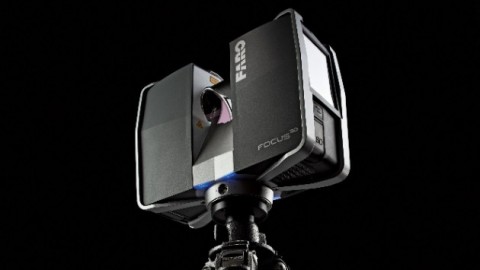World News – Over the past years technology seems to change about every 3 to 4 months. Just when you get that new iPhone or new tablet something better seems to come out or an updated advancement is made in the one you have. What is next on the horizon?
Most people feel anxious when their smartphone is out of arm’s reach. But what if it was actually on your arm, woven into the very fabric of your sweater? Sportswear designers Under Armour are already on the case. They recently unveiled their touchscreen t-shirt concept, Armour39, which measures your athletic performance.
It’s just one recent example of how design, technology and science are coming together to form a new generation of consumer products that look set to shape the future.
- Marcus Fairs, editor-in-chief of design magazine Dezeen, says that wearable technology will be a defining feature of future design. Fairs points to the likes of MC10, whose founder Professor John Rogers designed the stretchable circuit, and whose mission statement is to “extend human capabilities by making high-performance electronics virtually invisible, conformal, and wearable” The Biostamp is a digital temporary tattoo that stretches and twists seamlessly with our bodies to monitor our health.

- While augmented reality devices such as Google Glass may for now be the preserve of middle-aged men from Silicone Valley, Fairs is convinced this sort of technology will be the norm in years to come.Among Google’s early competitors is the Vuzix smart glasses. Vuzix M100, which won the award for “Best of Innovations” in the design and engineering category at CES 2013, sync with apps on your smartphone and display them before your eyes.
- One step on from wearable technology is technology concealed inside the body altogether. In this way, Tokyo designers Takram have devised a solution to a future where drinking water is scarce. The Shenu: Hydrolemic System includes inserts for your nasal cavity to preserve water lost through breathing, a urine condenser and a radiating collar to lower body temperature and abate perspiration.
- The emergence of sophisticated 3D-printing tools is also likely to shape consumer technology in unexpected ways, says Design Museum curator Deyan Sudjic. While domestic 3D printers are largely “just making combs and shoehorns” for now, Sudjic says that in the future we will be using them to manufacture much more complex devices.The CubeX Duo, which won “Best Emerging Tech” at the Consumer Electronics Show (CES) this year, is one of the more accessible 3D printers around, designed to be used at home by the average consumer.
- As 3D printing advances, so too will our ability to produce accurate 3D digital models. For those of you whose skills are lacking in the digital design department, the FARO Focus3D is a high-speed laser scanner that can create three dimensional digital models of existing objects, meaning that we can produce exact measurable copies of whatever we want.
- Industrial designer Ross Lovegrove says that the best future designs will be a marriage of science, health and manufacturing, the likes of which we are beginning to see with relatively low-cost and stylish health monitoring devices.Award-winning company Fitbit specializes in products to aid fitness, in particular the Fitbit Flex, a wireless-enabled wearable tracking device that measures your daily movements. Lights on the device indicate how you are stacking up against your personal goals.
- Lovegrove says that the outwardly unassuming Nike Flyknit running shoes are also an indication of the shape of things to come in terms of the design thinking that went into building.”The way they are woven. They put strength and structure where it is required. There are no aglets so they only need to be constructed with one material,” he says.
- The Nest thermostat is another device that brings together elegant design with super-smart technology. It has the ability to remember, to learn about your lifestyle and adjust the temperature of your environment accordingly. Designed by former king of the iPod Tony Fadell, the thermostat turns down while you are away and can be controlled remotely via your smartphone. It looks cool too.
- Of course the next step from learning about your lifestyle is actually feeling it. These headphones from Neurowear can read your subconscious mind. Yes, really. With a sensor that measures brainwaves they detect your mood and select music from your playlists to match it.
- But the future isn’t all high-tech gadgetry. Some of the best innovations will still draw heavily on technology from the past. This is modern-day clay oven won the coveted D&AD award earlier this year. Designers have given a 21st century makeover to a product whose age-old function is still the best. By inserting a porous stone disc, it acts in the same way as a traditional wood fired oven.
- Another update of an ancient yet unbeatable design — the wheel. Devised by Vitamins design, this is the first ever foldable wheelchair wheel, earning it this year’s transport Design of the Year Award at London’s Design Museum.
By Arion McNicoll, for CNN


1 comment
The devil is in the details. This article states, in part: “But what if it was actually on your arm, woven into the very fabric of your sweater? Sportswear designers Under Armour are already on the case. They recently unveiled their touchscreen t-shirt concept, Armour39, which measures your athletic performance.”
In fact, there is no T-shirt sold by Under Armour that “measures your athletic performance.” Their product, the Armour39 is just a chest strap that communicates with a proprietary wrist watch or to some smart phone brands and models. And, as far as unveiling “…their touchscreen t-shirt concept, Armour39…”, all they did was write a few words that implied that they might have such a product woven into a T-shirt *sometime* in the future.
I already have a chest strap that measures my heart rate and communicates that info to a wrist watch. I’ve had that for several years. All the Under Armour people have done is make a software program that grades the amount of effort of each workout and then provides a numerical grade from 0 to 10 of the athlete’s workout. The hardware (i.e. the strap and wrist watch) are actually *old* technology. You’ll probably have to wait several years before a computer chip *and* a power source are made small enough and flexible enough to be incorporated into the fabric of a shirt, pair or shorts, or a jockstrap.